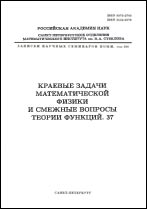|
|
Zapiski Nauchnykh Seminarov LOMI, 1974, Volume 40, Pages 30–37
(Mi znsl2679)
|
 |
|
 |
What does the law of the exeluted middle follow from?
V. Ya. Kreinovich
Abstract:
Theories considered contain Heyting arithmetic and the axiom of existence of functions 1.4. Elementary theory of real numbers is constructed along the usual lines (e.g.[4]). It is proved that the law of excluded middle (as a scheme for arithmetic formulae) follows from the statements: the equality of real numbers is decidable; every non-decreasing bounded sequence converges; every partial function can be extended to a total one. The following three theorems are equivalent modulo Markov principles a) decidability of equality, b) the above-mentioned theorem about non-decreasing sequences, c) Bolzano–Weierstrass theorem that every bounded sequence has a convergent subsequence. Lebesgue's theorem that every denumerable open covering of [0,1] contains a finite subcovering follows from each one of a)–c) and is weaker than any of them.
Citation:
V. Ya. Kreinovich, “What does the law of the exeluted middle follow from?”, Studies in constructive mathematics and mathematical logic. Part VI, Zap. Nauchn. Sem. LOMI, 40, "Nauka", Leningrad. Otdel., Leningrad, 1974, 30–37
Linking options:
https://www.mathnet.ru/eng/znsl2679 https://www.mathnet.ru/eng/znsl/v40/p30
|

| Statistics & downloads: |
| Abstract page: | 206 | | Full-text PDF : | 103 |
|




 Contact us:
Contact us: Terms of Use
Terms of Use
 Registration to the website
Registration to the website Logotypes
Logotypes








 Citation in format
Citation in format 